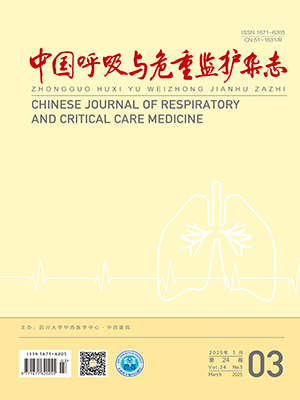Objective To evaluate the complication rate of CT-guided percutaneous lung biopsy and determine the risk factors. Methods A retrospective investigation of patients with CT-guided percutaneous lung biopsy in Ruijin Hospital, Shanghai Jiao Tong University School of Medicine between2002 and 2009 was performed. The risk factors for complications were determined by multivariate analysis of variables related to patients’demographics, lung lesions, biopsy procedures, and individual radiological features. Results 281 biopsy procedures were enrolled. The total complication rate was 55. 9% with pneumothorax 32. 4% ( 91/281) , hemoptysis 34. 5% ( 97 /281) , and cutaneous emphysema2. 1% ( 6 /281) , and with no mortality.The pneumothorax rate was correlated with lesion location, lesion depth, and number of pleural passes. The bleeding risk was correlated with lesion size, lesion depth, and age. Prediction models for pneumothorax and bleeding were deduced by logistic regression. The pneumothorax model had a sensitivity of 80. 0% and a specificity of 62. 4% . And the bleeding model had a sensitivity of 67. 4% and a specificity of 88. 8% .Conclusions Lesion location, lesion depth, and number of pleural passes were independent risk factors for pneumothorax. Lesion size, lesion depth, and age were independent risk factors for bleeding. The prediction models for pneumothorax and bleeding will helpfully reduce the complication of CT-guided lung biopsy.
Citation: NI Yingmeng,SHI Guochao,WAN Huanying,CHEN Kemin,WU Daming.. Complications of CT-Guided Percutaneous Lung Biopsy and Its Risk Factors. Chinese Journal of Respiratory and Critical Care Medicine, 2011, 10(2): 162-167. doi: Copy
Copyright © the editorial department of Chinese Journal of Respiratory and Critical Care Medicine of West China Medical Publisher. All rights reserved




